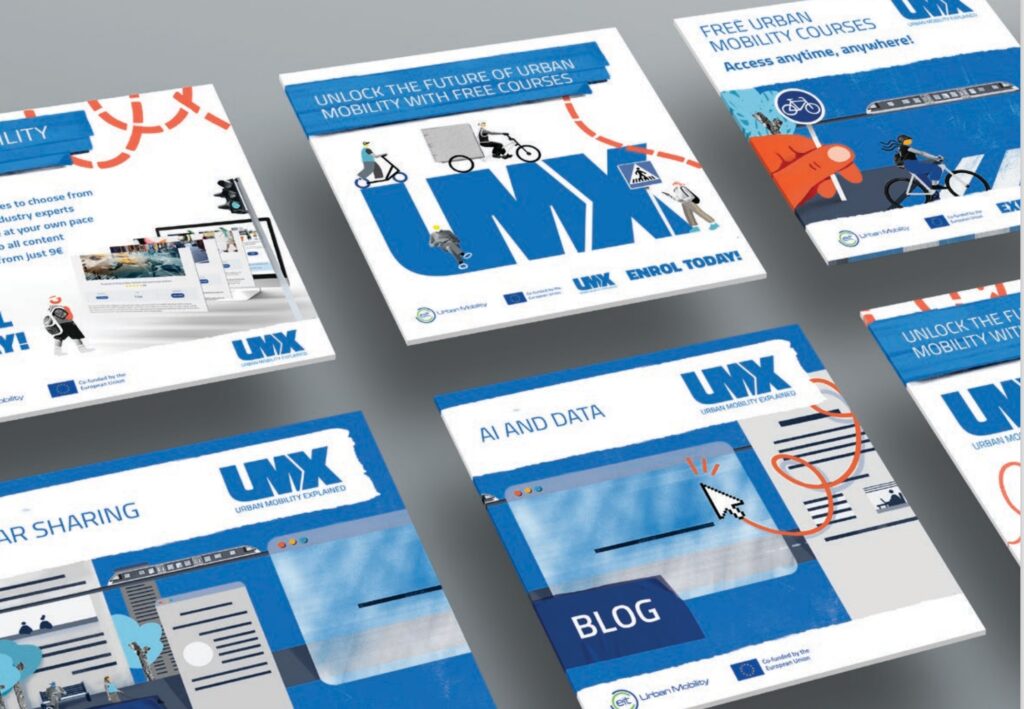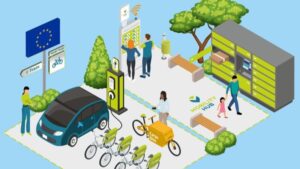So you want to get serious about breaking into urban mobility but you aren’t sure where to start? Maybe you’re beginning your professional career and you want to make a strong impression. Or maybe you’re further along and looking to change course, like this writer did 10 years into her career.
Either way, urban mobility is such a large field because it covers all of our commutes and journeys — not just in cities and towns but between them, too. While we’re at it, urban mobility loops in other big sectors like transportation, technology and sustainability as well. In short, the industry literally never stops moving, which means there’s plenty of room for new changemakers like you and me to make our own moves within it.
Here are a few tangible steps you can take today to start your own journey in the urban mobility sector:
Step 1: Get to know the lay of your land
Before diving into specific topics within urban mobility, take a close look at your own neighbourhood. What about your environment intrigues you? Is it the variety of transportation options available, the city’s approach to sustainability, or the way urban planning shapes people’s daily lives? Is it the people doing a Jane Jacobs-style “sidewalk ballet” or the increasing levels of greenery on your streets? Or is it the noise from vehicles zooming by or the headache of another day wasted sitting in traffic? And how is it different from other places you’ve travelled to or lived in? Taking the time to understand what, specifically, inspires you can help narrow down your focus within the large field of urban mobility.
For those who are mid-career, you might also want to try framing your interest in urban mobility within a professional context you know well or a specific skill set that you’ve already honed. For example, think about how the most intriguing parts of urban mobility could be tied to your current industry, like product management, consulting or communications. (This writer found a path into urban mobility by linking it with her background in copywriting and her fascination with public transportation, which has allowed her to avoid getting a driver’s licence… and she may never need one!)
Step 2: Tap into educational tools
Watching viral videos about urbanism on TikTok or the popular videos on our UMX YouTube channel can be a fun and even educational way to spend one’s time contemplating urban mobility. But it’s one thing to be interested in a subject and another thing to take it seriously enough that you study it in depth.
Once you’ve identified the aspects of urban mobility that captivate you the most, dedicate a chunk of time to learning about them in an educational environment. That could be in a traditional classroom or online, with classes taught live by an instructor or classes you can take at your convenience.
At UMX, we offer 50+ self-paced online courses on both broad-ranging subjects like our “Fundamentals or Urban Mobility” and specific topics like green infrastructure, micromobility, autonomous vehicles and more. See our full course catalogue to browse by category. All of our online courses are free to take, with official certificates of completion available from EIT Urban Mobility that you can display on your LinkedIn profile.
For those looking for more of a direct classroom approach, there are several online, in-person and hybrid programmes available throughout Europe. Some of them are offered in partnership with universities to provide shorter, professionally-oriented courses, as opposed to master’s programmes, which can take a year or more to complete. Those with more professional experience might be interested in UMX’s Applied Learning programmes, which lean on our 750+ partner network to bring you master classes and training initiatives in several different languages.
Regardless of how you ultimately decide to go about it, investing in your education is a crucial step toward building a solid foundation in urban mobility.

Step 3: Engage with experts and stay in the loop
Networking is key in any industry, and urban mobility is no different. Start by identifying the people, companies and organisations that are leading the charge in the areas you’re interested in. Subscribe to their newsletters, read their publications and follow them on social media, especially LinkedIn. And if you’re feeling brave, consider reaching out directly to an expert for an “informational interview” to learn more about their experiences. While there’s no guarantee that networking will land you a job in urban mobility, it’s an equally important part of the learning process.
Lastly, it’s crucial to stay informed about the latest developments in urban mobility if you want to break into the field. Make it a habit to read articles from traditional media outlets, which frequently cover urban mobility trends, as well as smaller, more specialised publications and blogs, like our UMX blog and the EIT Urban Mobility Marketplace Blog. Research papers and studies in academic journals often provide the raw material for those articles, if you can handle some of the academic terminology. And, of course, there are plenty of terrific books to add to your reading list, too.
All of these resources can deepen your understanding of specific topics within urban mobility — and give you plenty to talk about as you network and (hopefully!) score a job interview.
Bring it all together
Getting into urban mobility can be a rewarding decision in your professional journey, and these steps are just the beginning. Combine these approaches and you’ll not only broaden your knowledge but you’ll also have a good pulse on the industry and setting yourself up for success in your career.
Good luck on your journey — engage with us on LinkedIn along the way!

Adina Rose Levin
Adina Levin was born and raised in Chicago, and clocked in over 10 years in New York City before moving to Barcelona. As a freelance writer and creative strategist, she explores cities, culture, media and tech.





